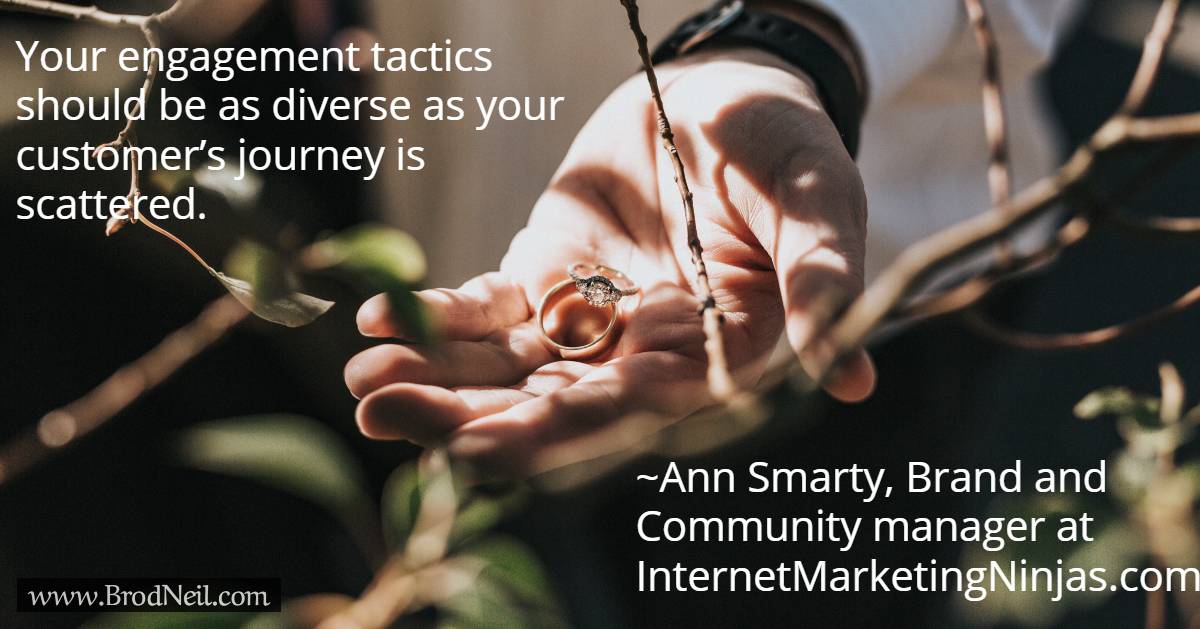Tag: Marketing Fundamentals
Marketing is a very essential business tool that involves strategizing your product or service, price, promotion, and place that will satisfy the needs and wants of the consumers and benefit you in return.
Every big business that exists today started from being small. While managing a small or medium business can be challenging and overwhelming, learning about the marketing fundamentals can help you shape a mixed strategy that will make your business grow. Without an effective marketing strategy, it would be difficult to survive in a competitive environment with the ever-changing demands and needs of customers.
So what does marketing mean? How can it help you make your business grow? In this post, we will share with you some marketing basics that will help you understand how it can work wonders for your business.
Marketing terminologies defined
To help you understand the basics of marketing, here are some important terms used in marketing.
Marketing
In the book Principles of Marketing by Kotler and Armstrong, Marketing has been defined as a social and managerial process by which individuals and groups obtain what they need and want through creating and exchanging products and values with others.
As a business owner, it is your aim to get more sales, gain a competitive advantage, and earn more profit through the product or service you offer. Marketing is the way to achieve this goal.
Marketing as a societal process
Marketing is the means by which you study what your customers need and want and then provide them. This will get you more demand for your product/service and achieve more sales. It is giving more value to the product or service you offer that result in attracting more customers.
Marketing as a managerial process
Marketing is also your strategy for selling your product or service to your customers. It is building awareness and promoting your product/service through advertisements, sponsorships, and more. It also includes how to reach out to your customers through your distribution channels, whether retail or online.
Consumer Needs, Wants, and Demand
The needs, the wants, and the demands are essential aspects of marketing. The needs and wants are what you should try to determine and satisfy in order to help increase the demand for your product/service. Consumer needs and wants are the focus of promotional and marketing strategies.
Needs
Needs are basic necessities that have to be satisfied in order to live a healthy and safe life, such as food, water, clothing, and shelter. They may also include education, insurance, healthcare, and other similar needs. Needs are not always tangible. There are also social and emotional needs that need to be met, such as self-esteem, as well as familial or societal needs.
Wants
Wants, on the other hand, are not necessary for survival. They are something people desire and wish for. These wants regularly change and are often influenced by culture. Unlike needs, wants are unlimited. Wants can also transform into certain needs for many people if they always manage to satisfy their wants or if society and times deem them to be normal. For example, having a television set is not a need, but it seems these days, it is a requirement for every home.
Demand
When customers are willing to get their needs and their wants and they have the ability to pay (purchasing power), then there is demand. Demand is what drives sales.
5 Marketing concepts
Marketing concepts are philosophies and beliefs that different businesses have when it comes to fulfilling the needs and wants of the customers that benefit the establishment, as well. Since businesses have different target customers and different values, there are also different concepts when it comes to marketing goods and services. The marketing concepts are summarized as follows:
Production concept
Product concept
Selling concept
Marketing concept
Societal marketing concept
Production concept
Businesses that are oriented toward the production concept are focused on production and efficiency. They believe that they can lower their costs and increase their supply through mass production. It is their belief that consumers prefer to buy goods or avail of services that are inexpensive and widely available.
Product concept
The product concept is based on the belief that consumers prefer products or services of superior quality to cheaper and more widely available goods/services. Businesses focus on the quality of their goods or services than the price and availability.
Selling concept
The selling marketing concept believes that customers will avail of your products or services as long as you promote and sell your business heavily. Establishments focus more on the sale of actual goods/services than the production or the product itself.
Marketing concept
A business that believes in the marketing concept puts the customer first. All marketing activities are focused on the customers’ needs and wants. They make a profit by creating and maintaining customer satisfaction. This concept believes that by delivering the needs and wants of consumers, they can deliver more value than their competitors.
Societal marketing concept
This relatively new philosophy goes beyond the marketing concept mentioned above. It is more concerned with the long-term benefits of the consumers and society as a whole. It takes three things into consideration – profits, customer satisfaction, and societal interests. Marketing strategies of businesses that are geared towards this concept also include issues like pollution control and environmentalism, human and civil rights, ethnicity, animal welfare, and more.
Understanding these marketing concepts and identifying your marketing philosophy will help you define and lay out marketing strategies for your business.
The 7Ps of marketing
Learning about the fundamentals of marketing involves knowledge of the 4Ps. The 4Ps of your business include the Product (the good/service you offer), Price (how much the customer pays), Place (the location where your product is being marketed), and Promotion (the advertising you use).
The 4Ps are called the marketing mix, wherein you can combine these four components to meet your customer needs and wants with consideration to your goals. Other marketing mix models may extend up to 7Ps that would include people, processes, and physical evidence. For small and medium businesses, understanding the 4Ps should be enough to help you generate effective marketing strategies.
1. Product
Product refers to the good or service you are offering. This also includes all the features and benefits of your product that will fulfill the needs and wants of your customers. In this aspect, you need to decide and continuously plan about the variations of your goods or services, their accessories, styling, packaging, as well as warranties and after-sale service and repairs.
An ideal product should be able to make the consumers demand your product and be compelling enough for them to want it even if it is not a need or want at the moment. A helpful question you can ask to improve the productivity of your business is “How can you develop your goods or services to make them more attractive to consumers?”
2. Price
The price is what the consumers pay in exchange for the good or service you offer. In a business endeavor, the price is basically affected by the production and operating expenses with a markup. In marketing, apart from these given expenses, you also need to consider how much consumers think your product is worth (perceived value) and how much they are willing to pay. You can adjust your prices using this information. This information may be obtained through research and by conducting surveys.
Pricing strategies in marketing include offering seasonal pricing and discounts to attract new customers and retain existing ones. You may also think about raising the price of a product or service to make it seem more like a luxury to consumers.
3. Place
The place is where your product is made available for sale or distribution. It is where your services are made available. Accessibility is the main concern in this marketing component so that prospective and repeat customers can easily see you, find you, and avail of your product or service.
The place is also how you present your retail store and display the products in it in order to attract more customers. If you are into an online business, the place is the look, the feel, and the navigation of your website. It is how your online shop appears to customers, be it simple or sophisticated, depending on your target market. It is how easily your online shop can be navigated. For an online business, the place is also how quickly you are able to deliver your goods and services to your customers (turnaround time).
4. Promotion
The final P in the 4Ps marketing mix is promotion. It involves activities that help promote and create awareness of your goods or services. These activities include advertising, public relations, promotional offers, direct marketing, and sales tactics.
Promotion links with your product, price, and place. It shows consumers why they need to avail of your product or service for a certain price. It also informs consumers of new variations to your products and seasonal price drops. Promotion links to place in a way that place provides a venue for your promotional strategies to reach your target audience. These places include your retail store or your online shop, your website, social media, radio, and television broadcast, and more.
5. People
Excellent customer service not only leads to sales but also generates referrals and expands your customer base.
6. Process
The process of delivering your product to the consumer should be efficient, reliable, and sustainable.
7. Physical evidence
Physical evidence proves your brand’s existence and purchase. Examples include a physical store, website, and business cards. It is a bit very similar to the place, but this includes social proof, reviews, testimonials, social media channels, etc.
Photo by Nikita Kachanovsky on Unsplash
Basic marketing strategies and considerations
To give you an idea of what marketing strategies are like, take a look at these examples.
Create social media accounts, such as Facebook, and promote there
Create a website and a blog where consumers can learn more about your product/service and where you can post your promotional offers
Offer free consultation
Give incentives to employees for reaching sales targets or gaining new clients
Pay advertisements in print and social media (others’ accounts)
Write a column for a magazine or newspaper
Speak at events
Partner with other businesses
Sponsor events
Change the existing look or packaging of a product
Offer a free trial or promotional pricing for new products/services
Offer product bundles/packages for a lesser price
Offer freebies for every product purchase or service availed
Make use of stamp cards
Renovate retail store – replace worn-out furniture and fixture
Give customers more payment options
These are just some of the many strategies you can use in your marketing mix. However, it is not enough to simply list down and apply all of these strategies to your business. There are important considerations you need to deliberate and criteria you need to evaluate. You need to remember that your business is unique and that certain strategies might work while others won’t. Some strategies might also need to be taken one step at a time.
Here are some considerations to factor in that will help you evaluate your marketing strategies:
Who your target consumers are (demographics of your customer base)
Where they live (location)
Where they frequently spend time online or offline (applicable media)
How they look for products/services in your field of specialization (online, going to the mall, directory services)
Who do they listen to when making decisions in relation to your product/service (endorsers – experts, celebrities, etc.)
Other considerations include how the target audience is likely to respond to product and price promotions; how your employees are most likely motivated to sell your product or serve efficiently; and how much budget you can allocate for your marketing promotions for the time being.
Answering these questions and evaluating these criteria will help you determine which of your proposed strategies is actually doable. You can then try mixing some of these marketing strategies and see how they work. Since marketing is a continuous process, it is important to evaluate the effectiveness of your strategies regularly. With your evaluation, you can decide to replace unproductive ones, maintain and improve effective ones, and formulate new ones with the changes in trend.
The takeaway
Marketing is not only for large companies. It is a very crucial component for small and medium business enterprises as well, so they can grow into more profitable and larger businesses that can cater to more consumers.
Marketing is basically a continuous process of strategizing to build awareness and increase the customer base by putting into consideration the needs, wants, and behavior of the consumers and the goals of your company.
If you are interested in DIY Internet marketing, click this link.
More about Marketing below:








